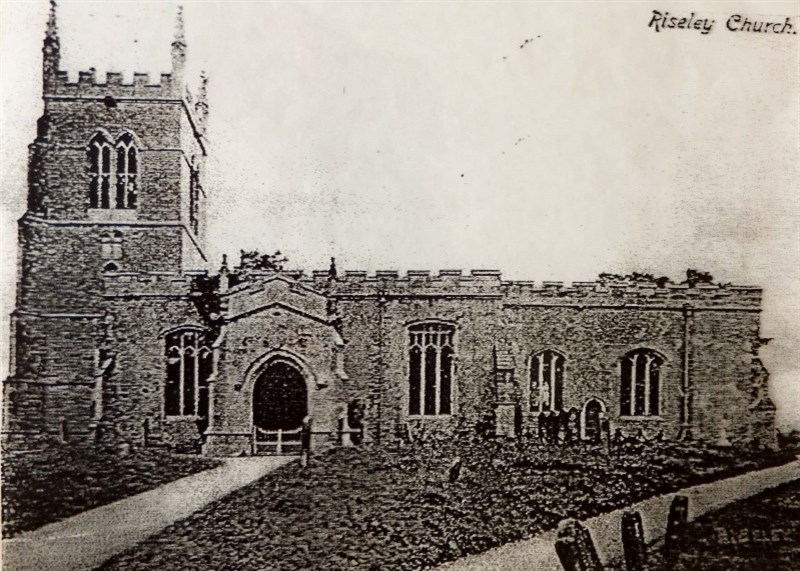Church History
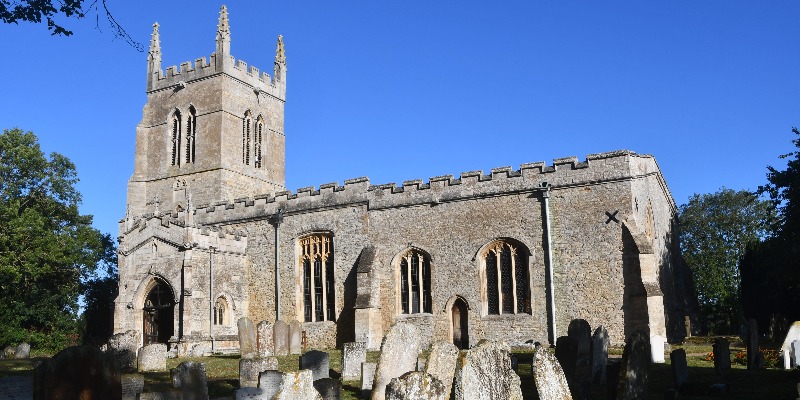
The village of Riseley lies in a valley with the church on the western side, sitting parallel with the High Street. The church building is believed to have been part of the village for over 850 years and was mostly completed by 1500. It comprises a chancel (part of the church reserved of the clergy and choir) with organ chamber and a south chapel, a nave (the central part of the building used by the congregation, usually rectangular and comprising of aisles) with a tower sits on the west side and the entrance with a porch is on the south. It is hard to know when the building itself was first established as there are no prominent pre-Norman features.
Records from the early 12th century state there was a small nave for the congregation and a chancel for the altar and priest. The 13th century saw the addition of a south aisle and chapel built against the original nave. It is thought the chapel was extended past the chancel where a window dating back to the 13th century can be seen on the north wall of the chapel. During the 14th century the length of the chancel was extended to equal the chapel along with an interconnecting archway. About this time the main part of the church tower was constructed, this was later heightened in the 15th century at the same time as the addition of the porch. In the 15th century, the south chapel was used as the chancel and the north chancel as the chapel. A chantry chapel was created in 1548. This was a dedicated area or altar within a church that was set aside especially for the performance of chantry duties by the priest. These altars were often embellished with gold and later become a sign of wealth. Within what is today known as the Church room, you can see a squint on a diagonal axis, this allowed the priest at the altar in the north chantry chapel to see the priest at the high altar in the south chapel.
Patronage of the Church
Many military orders were established in the 11th and 12th century. These were religious societies of knights dedicated to the protection of pilgrims. Most members of military orders took religious vows, and these orders has hierarchical structures with a grand master at the top. Among the original military orders was the Knights Templar and Knights Hospitellar, these later became known as the order of St John of Jerusalem.
1539 saw the dissolve of military orders and the crown took over patronage of the church. Patronage, meaning control or power, usually involved financial aid. This continued until Queen Elizabeth gave patronage to Sir Christopher Hatton in 1585. In 1618 the church became property of Oliver St John of Bletsoe (our neighbouring village). It remained in this family until 1957 when it was taken over by the Church Of England trust.
In 1979 the parish of Bletsoe came together with that of Riseley to form the Benefice of Riseley with Bletsoe. The patron of the living is the Martyrs Memorial and Church of England Trust. Each parish retains its own churchwardens and parish officers as well as its separate Parochial Church Councils (PCCs), they simply share a rector.
Revd James Isaacs was installed as vicar at All Saints in September 2018.
If you visit us, a list of clergy can be found on either side of the vestry doors, the first of which is rector Fulco de Monte Acuto (1224). All others after him are vicars. This is due to the erection of the vicarage in 1249. The main difference between a rector and a vicar is that a vicar is a priest in charge of a parish that is financially supported from the outside – usually by a diocese. Whereas rectors are in charge of self supporting churches.
Rectors and Vicars of the past
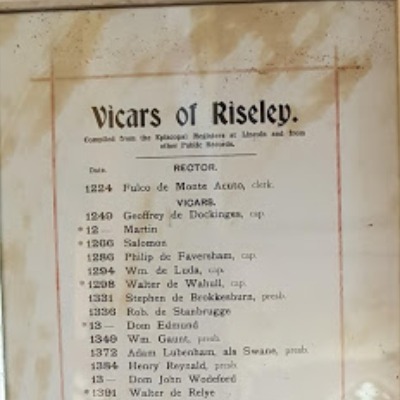
Internal restructuring of the building
In the 19th century, William Farrar, a parish carpenter, drew up plans to create more seating within the church. Work was carried out between 1841 and 1842 by William and Joseph Northern, local masons. Arches were raised, a new gallery erected and the windows on the south aisle heightened to allow more light in. A grant was given to the church by The Incorporated Church Building Society, as the work cost almost £250. The building reopened on 20th October 1842 with seats for all! Prior to this, those that could afford a pew in the church could ask anyone sitting on it to vacate.
The building suffered a set back in December 1875 when, during a morning service, the roof caught fire. The vicar at the time, Revd J J Blick, was about to give his sermon when a member of the congregation alerted him to the danger.
Revd John Ellis Turner came to Riseley in March 1889 from Christ Church, Luton and by 1893, some 50 years after the gallery had been installed, the Church was in need of serious attention. The roof needed repair and much of the building was in an unsafe condition. As this was going to cost as considerable amount of money many fundraising events were held. Groups were organised to clear the rubbish, it was during this clear up many items were unearthed, including an old piscina and aumbry (church cupboard) used for storing the altar plate. An architect from Kettering, Mr Alfred Gotch, was employed and the work was carried out by Messrs R Gell and Son of Bedford. The work included removal of the gallery, removal of the old square pews, replacement of flooring throughout the majority of the nave as the old one had rotted, raising of the altar, creation of a new organ chamber and tiling of the floor of the chancel. When the work was completed the Bishop of Ely came to re-open it on Wednesday 25th September 1895.
Chancel on south side (late 19th century)
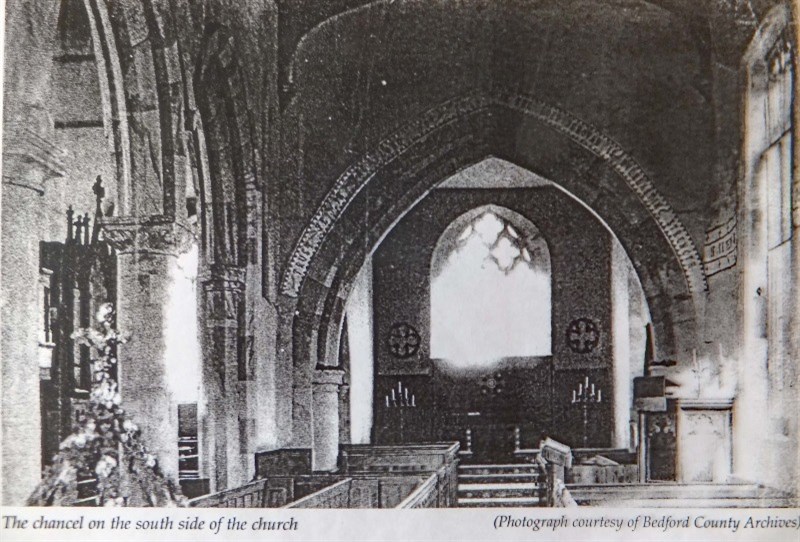
Chancel on north side (early 20th century)
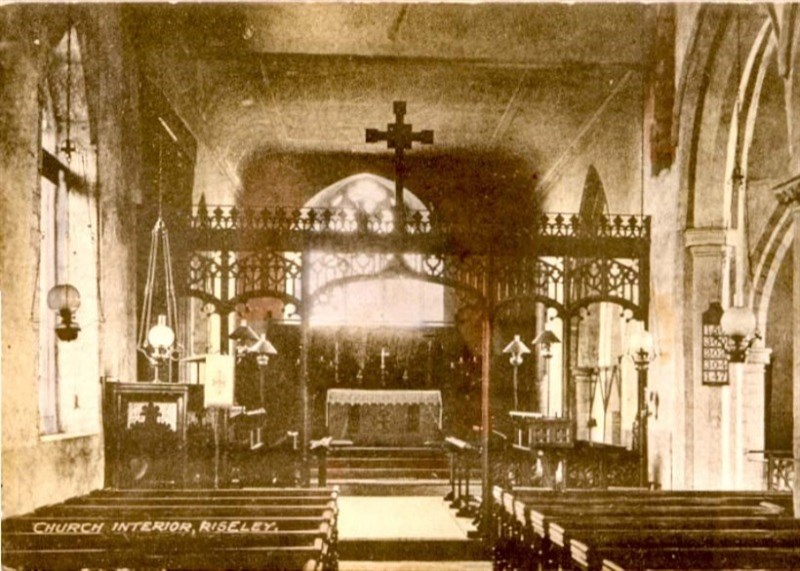
By 1937, with Revd James C H Paulson in post and responsibility of the upkeep of the church passed to the PCC from Lord St John of Bletsoe, securities were invested to provide an annual income to fund repairs of the building. For necessary repairs of the chancel £194.35 was paid and in the summer of 1937 Rushden Electrical Supply co. quoted £49 to fit 13 lights in the church. The church continued to need maintenance to the roof, organ, heating, lighting, pinnacles and the bells. Church members were encouraged to have a collection box in their homes and events were held to aid the appeal such as drives, dances and carol singing. The dramatic society even gifted some of the proceeds acquired from a show. It was agreed, that along with a new timber frame, copper would be used to repair the roof rather than lead. This work was completed in 1952 at a cost of £4,500, only £200 of this was given by the diocese, the rest was raised within the community. There were plans made later, in 1954, by the PCC to have electricity installed in memory of Revd Paulson’s father.
Revd Fredrick J C Davis came to Riseley in 1955. It was during his tenure that the organ was converted from a hand pump to an electric one and the old Musgrove stove was replaced with oil fired air heaters. In 1971, Taylors of Loughborough re hung the five bells in the tower and replaced the oak frame with a much sturdier steel girder cradle. (A 6th bell was added in 1987 in memory of Thomas Duncan who had been the village police officer in the 1940’s.)
Revd Peter Phillips who joined us in 1973 did not live in the old vicarage as it had become too expensive to heat and maintain, so it was sold and a new vicarage built on glebe land (land belonging to the church).
With increasing numbers of children attending church, Revd David Bourne, who came to the church in 1984, oversaw transformation of the Lady Chapel into a meeting room (now known as the church room) providing a much needed room for children's groups to meet during the Sunday services. The ‘Friends of All Saints’ trust was set up in 1985 for parishioners to support the much needed maintenance of the church. The church room was completed in 1987 and in 1992 an extra level was created in the church tower between the vestry and the bell ringing chamber, to provide further space for the children's groups. Changes took place in the altar and chancel area, two steps were removed from the sanctuary (where the altar stands today), the choir pews were moved and a concrete floor was laid. The chancel roof was repaired after being declared unsafe, when a piece of cornice fell from the ceiling. The altar was moved to the back of the sanctuary where you can see it today and the dais was built at the same time, linking the nave and the chancel together. A new gas fired overhead heating system was put in place along with a new sound system.
Revd Martin T Bailey, who came to All Saints in 2006, oversaw continued maintenance and decoration arising from the Quinqunenial inspections. He also worked with the PCC on the planning for an updated Vestry providing much needed disabled facilities and storage for the church. Just before moving to his new parish in 2018, approval for the Vestry works to go ahead was given. Work began in the spring of that interregnum year and was completed with little disruption in just a couple of months.
If you visit us, a short guide can be found on our welcome table inside the church providing sketches that go along side a walking tour referring to the different vantage points.
Aerial view of All Saints
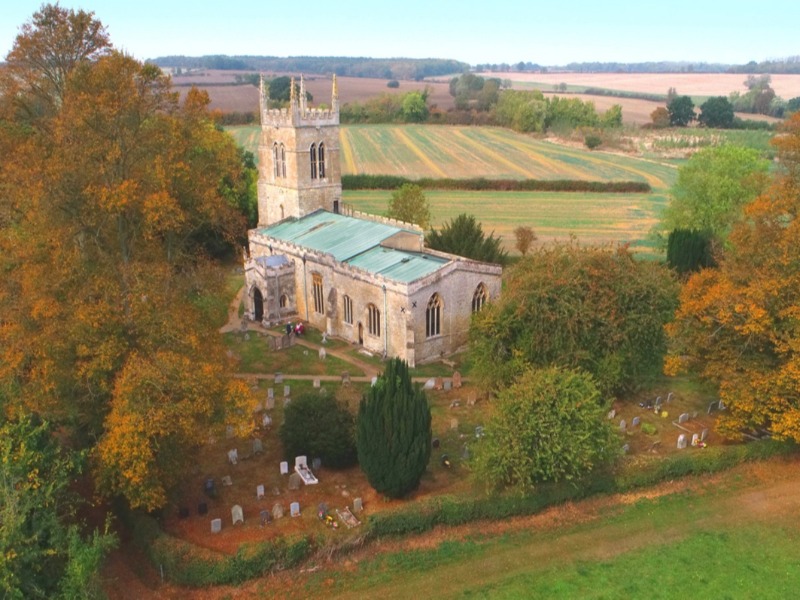
The War Memorial and the Churchyard
The war memorial was put in place to honour those perished in the World War I from our parish and can be seen standing proudly near the main entrance of the churchyard. It carries names of residents killed or missing in the First World War (21) and the Second World War (1).
"Death is swallowed up in victory"
1 Corinthians 10:54
Riseley War Memorial
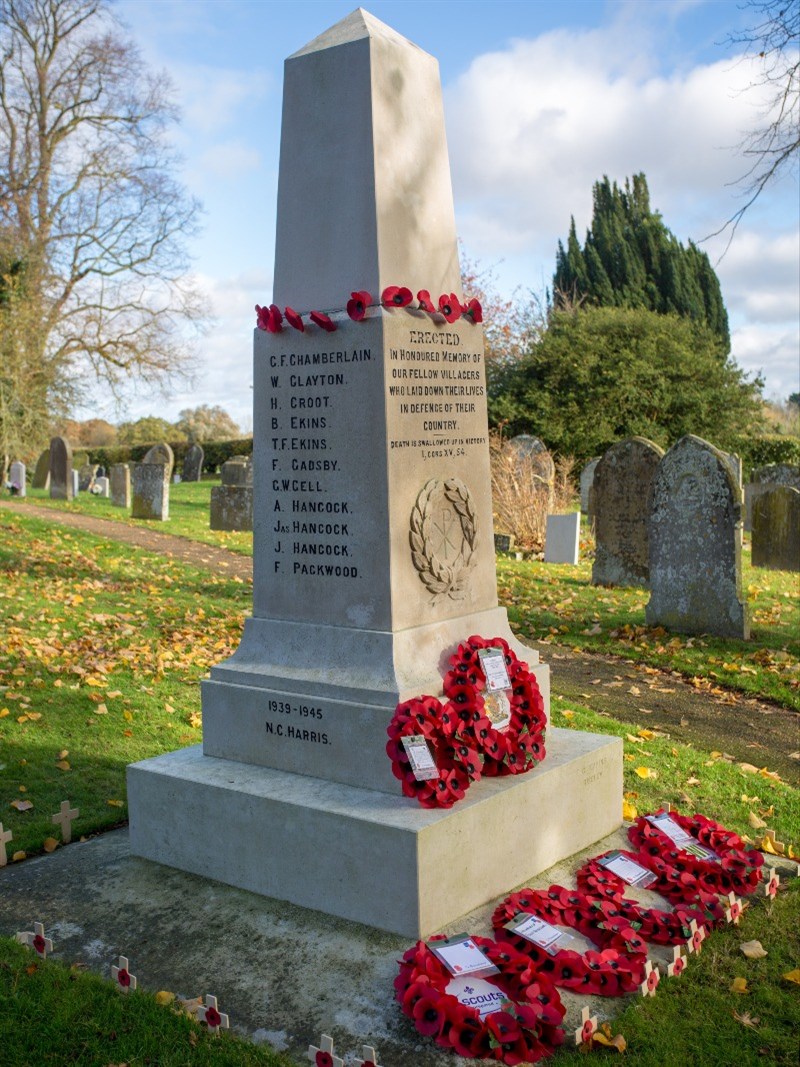
Over the years most denominations have been buried in the church yard, with Quaker being the one exception. The oldest known gravestone is dated 5th March 1691 and belongs to Ann Peacock. The oldest known person to be buried was 102.
Family History research
The earliest parish register to be found begins in 1626. If you are interested in family history research please be aware that only the current registers are held by the church. All others may be found at the Bedfordshire Archives and Records Service at Borough Hall in Bedford. Their website contains a considerable amount of helpful information and their full contact information. You may still of course contact us but we may only be able to offer limited help.
All Saints Church (early 20th century before War Memorial installation)
